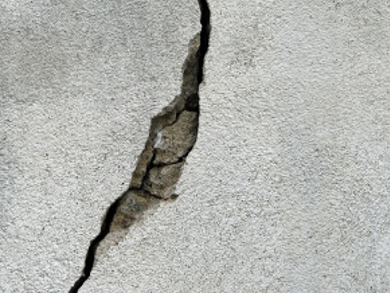Self-healing concrete could save substantial amounts of money for structural maintenance and repair, as well as reducing CO2 emissions from the manufacture of new concrete, wrote Prachi Patel, freelance writer, in a recent review article.
Exposure of unreacted cement particles to water and air triggers a slow self-healing process for small cracks in ordinary concrete. Recent research focuses on speeding up this process and preventing large cracks from forming. Polymer sealants work quickly, but many monomers have a limited shelf life and they react with their encapsulating materials. Hydrogels, which don’t require encapsulation, provide water to unreacted cement particles, stimulating crack healing. One type of concrete under development combines chemical agents for healing small cracks and shape-memory polymers for larger cracks.
Another type, currently being commercialized, contains polyvinyl alcohol fibers that promote the formation of many small cracks instead of a few large ones. One product slated for commercialization in 2016 incorporates bacteria that germinate on contact with moisture. The bacteria convert calcium lactate in the concrete to limestone that seals the cracks.
- Helping Concrete Heal Itself,
Prachi Patel,
ACS Central Sci. 2015.
DOI: 10.1021/acscentsci.5b00376



